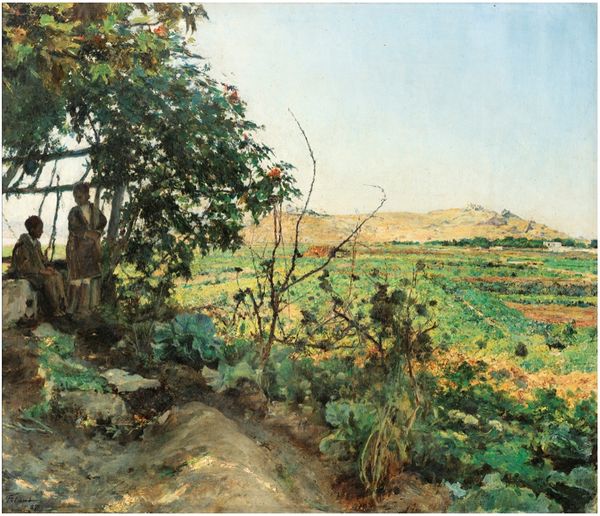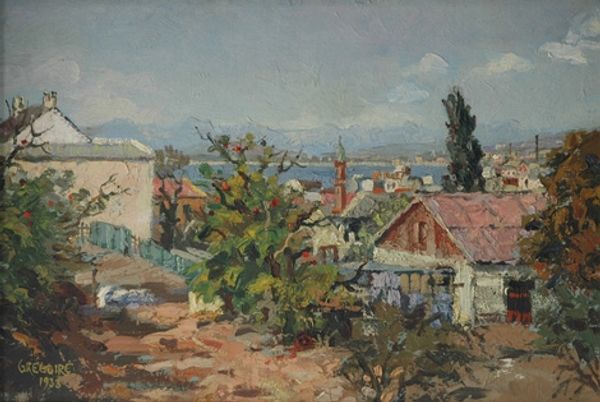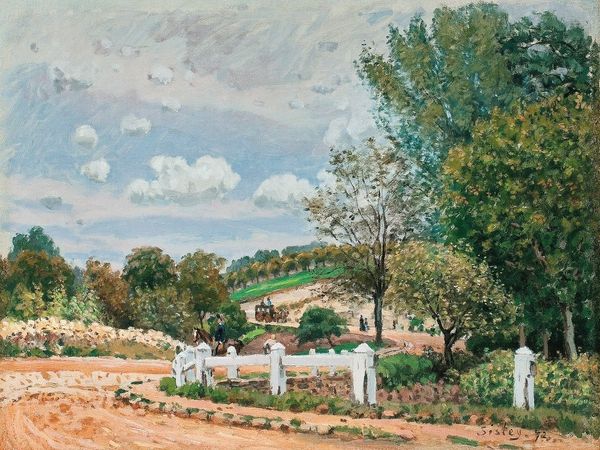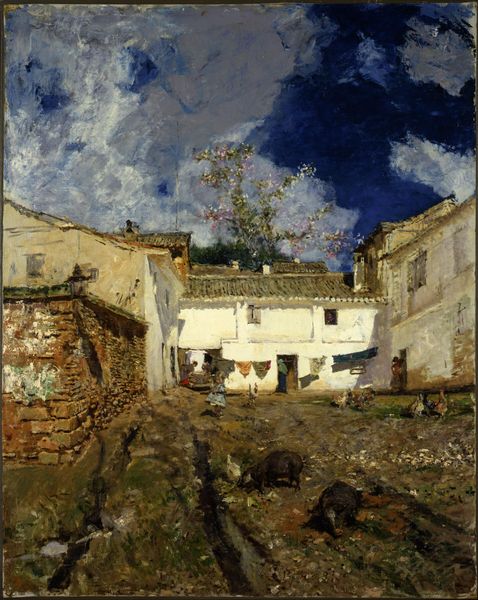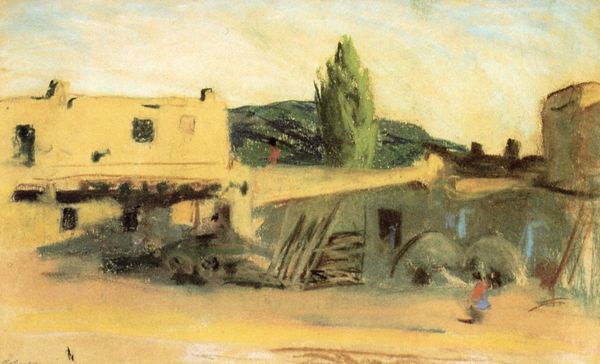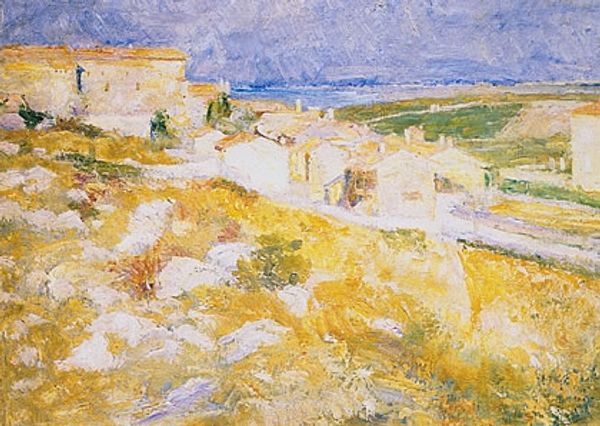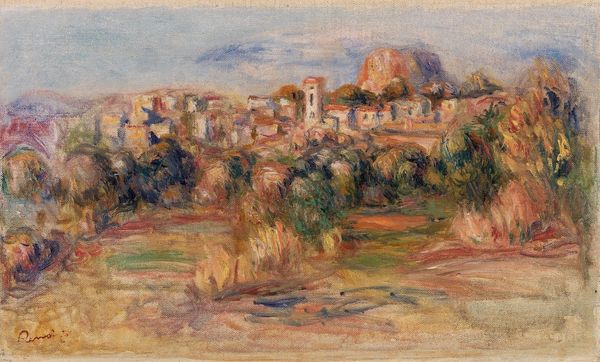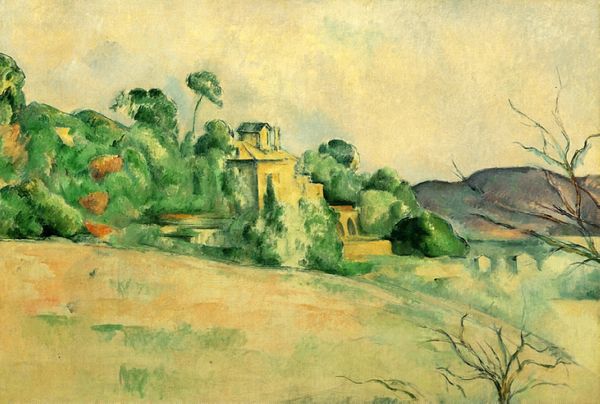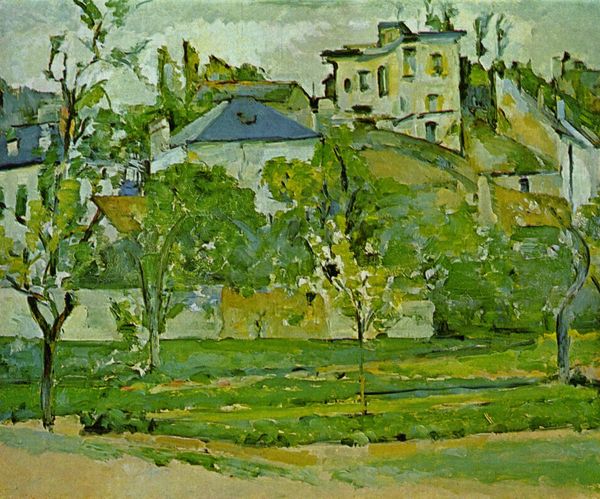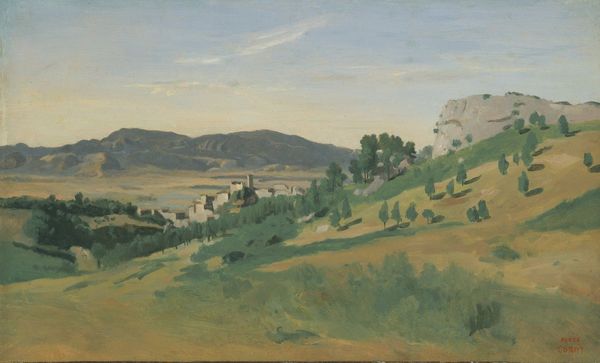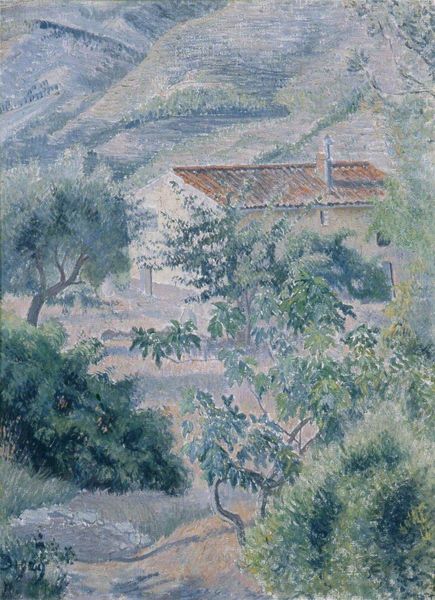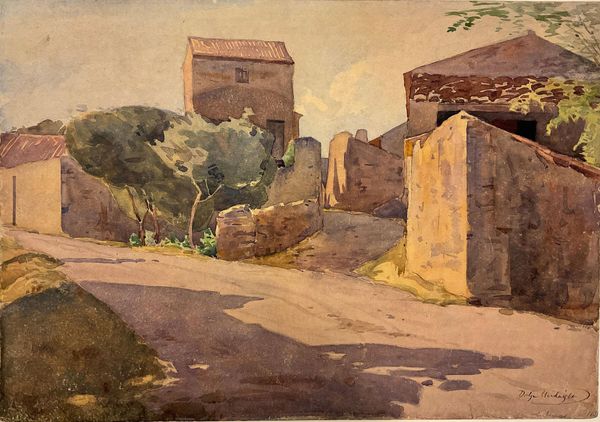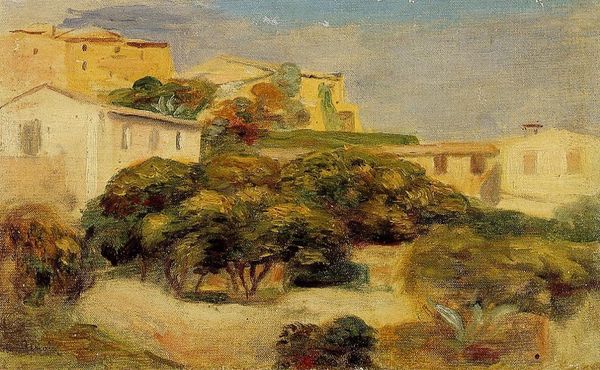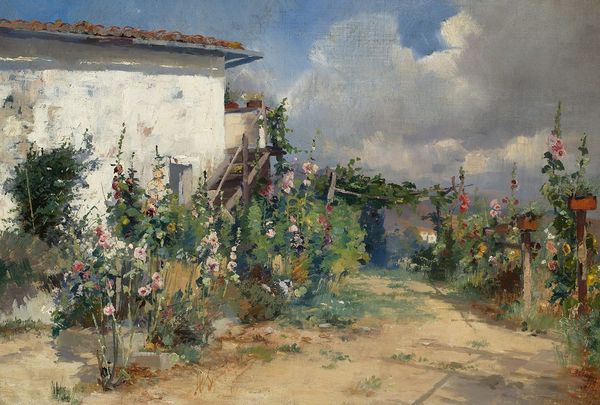
plein-air, oil-paint
#
impressionism
#
impressionist painting style
#
plein-air
#
oil-paint
#
landscape
#
house
#
impressionist landscape
#
oil painting
#
cityscape
#
post-impressionism
#
building
Copyright: Public domain
Curator: Let’s discuss Henrique Pousão’s “White Houses of Capri,” created in 1882. It’s an oil painting done en plein-air, showcasing a view of the island. Editor: The first thing that strikes me is how muted the color palette is, a kind of hazy warmth that gives a tranquil mood, almost like a dream. The composition is carefully balanced, but also slightly unsettling, perhaps from the dark mass of cacti contrasting with the distant pale buildings. Curator: Pousão, a Portuguese artist, was part of a generation grappling with Impressionism and Post-Impressionism. Capri was becoming a popular destination for artists and writers seeking new light and subjects. This work reflects the growing interest in capturing transient moments and everyday life, but also represents a conscious retreat from the industrial world into a more rustic landscape. Editor: Agreed. You see it immediately in the brushwork, the way the sky is treated. It's broken up with individual marks of slightly different tonalities creating a great sense of depth without losing touch with its own flatness. Curator: It's also crucial to consider the rise of plein-air painting. Advances in paint technology allowed artists to easily paint outdoors. Depicting specific locales like Capri became entangled with nationalist projects and European cultural expansion. Artists were not only painting scenery but also creating symbolic representations of place that spoke to a particular vision of Europe. Editor: The formal dynamism is remarkable, particularly in how he deals with the prickly pear cacti, the texture achieved makes you want to touch it, to experience that form! There is an intriguing tension between the natural and built environment. Those cubic houses appear to float within the verdant space. Curator: Indeed, by focusing on the formal qualities of this picture, we are acknowledging the power and influence of a rapidly expanding artistic and cultural marketplace in late 19th century Europe, in which notions of national identity were crucial to an artists´ success. Editor: Analyzing Pousão's use of shape and color gives us insight into his approach to landscape painting. I really appreciate his exploration of capturing light and depth. Curator: Looking at the social and historical context helps reveal how seemingly simple depictions of landscape reflect broader cultural, political, and artistic forces at work.
Comments
No comments
Be the first to comment and join the conversation on the ultimate creative platform.
